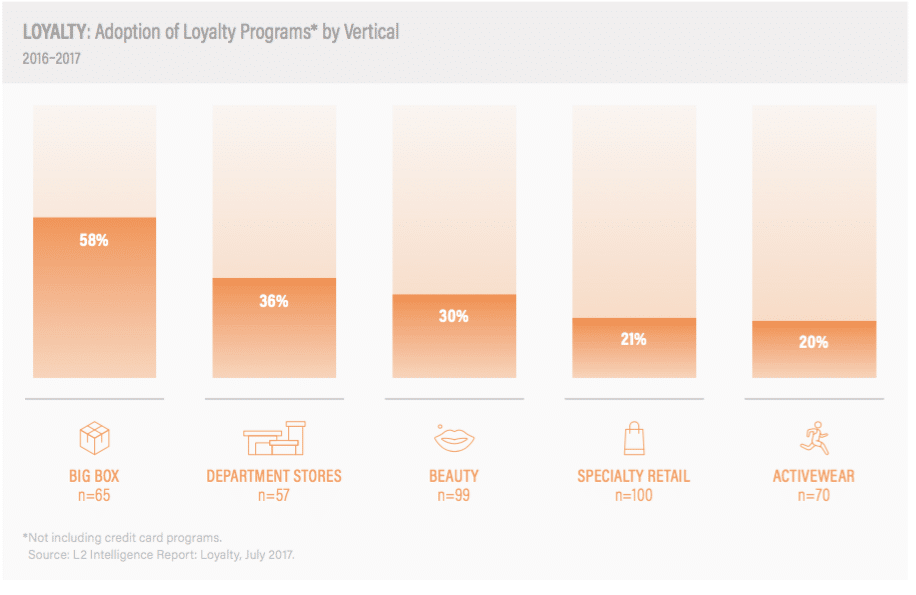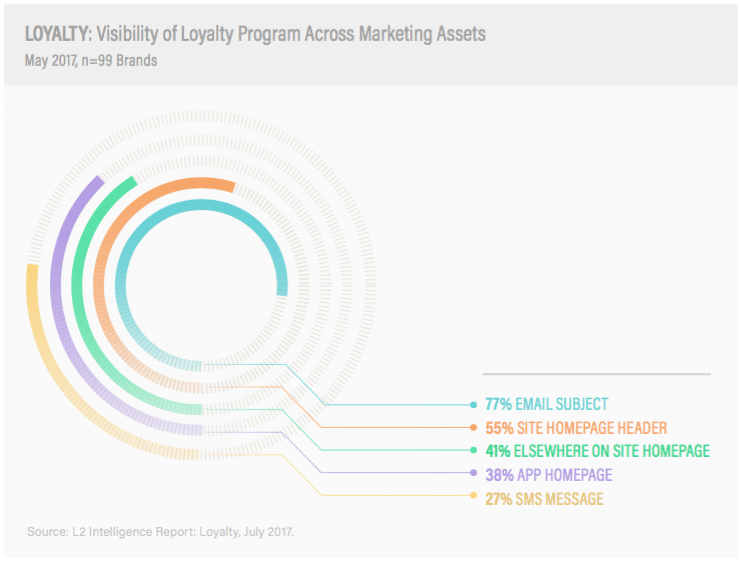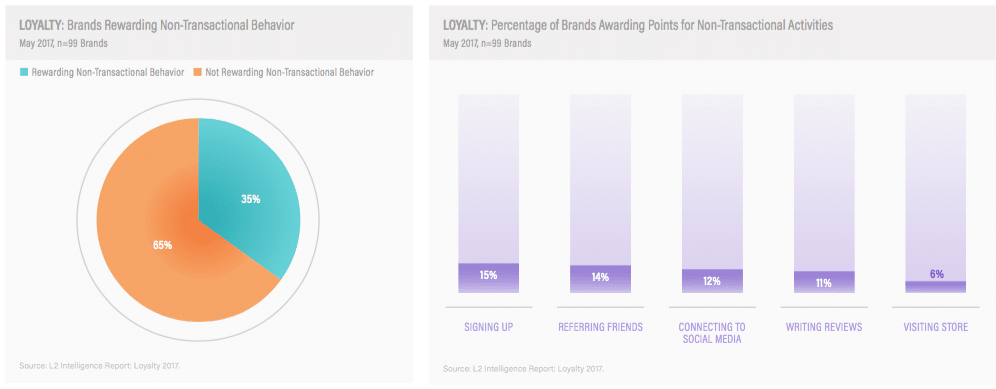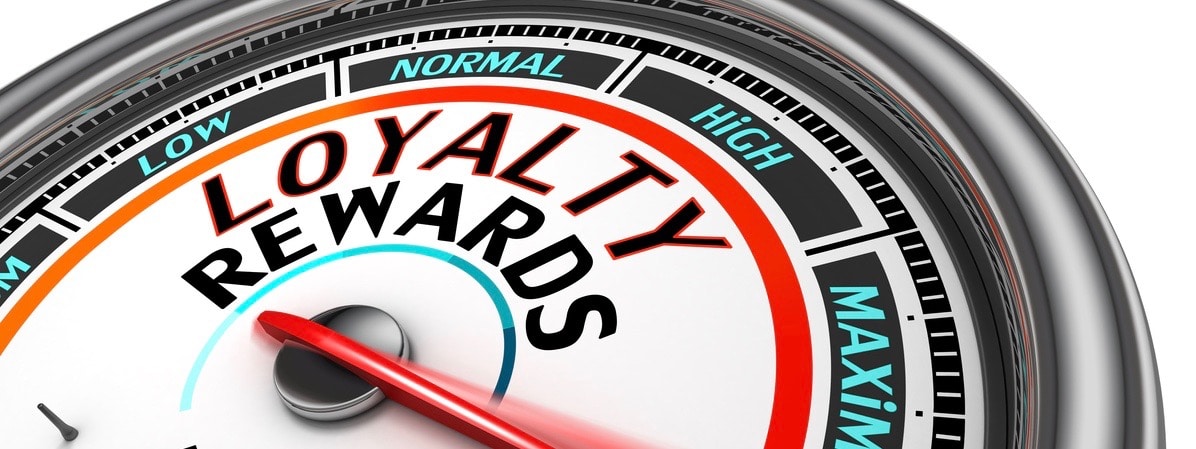To help brands and businesses get a better handle on building loyalty, digital benchmarking firm L2 has announced the release of its inaugural Intelligence Report: Loyalty 2017.
The study evaluates the successes and pitfalls of loyalty programs for 99 consumer brands across Activewear, Beauty, Big Box, Department Stores, and Specialty Retail—and provides an analysis of the structure, benefits, and usability of loyalty programs in regard to their added value for both customers and brands, with an emphasis on providing tactical recommendations to sustain consumer engagement and promote brand advocacy.

“It’s not news that in today’s oversaturated market, brands are struggling to retain the loyalty and attention of customers,” said Mike Froggatt, director of intelligence at L2, in a news release. “Regardless, the majority of consumers are still dissatisfied with current loyalty offerings, creating an opportunity for brands to build reward structures that add value to core products and services while differentiating the brand.”
Key findings from the report include:
Communicating loyalty
Clear communication is imperative for loyalty program success. Seventy-seven percent of brands mentioned “loyalty” in the subject of at least one email campaign during May 2017. These brands enjoyed a substantial lift in open rates (from 19 percent to 24 percent) but failed to keep the momentum going as only 6 percent of total brand emails advertised loyalty-related topics in their subject lines during this same period.

Barriers to entry
Fifty-six percent of brands automatically enroll users in their loyalty programs at account signup vs. 39 percent who require additional information to enroll. Placing the onus on consumers to complete the signup process deters users, especially when the majority of programs (86 percent) lack any rewards for completing a profile.
No purchase necessary
Thirty-five percent of brands reward loyalty members for non-transactional engagement such as incentivizing referrals and reviews, and linking social media accounts. Valuing consumers beyond their wallets provides several benefits as Department Store brands that reward non-transactional engagement also enjoy 48 percent more daily site visits, 13 percent long site visits, and a 5 percent lower bounce rate.

“Properly identifying the value proposition of loyalty programs is key to their success,” said Camilla Opperman, senior associate at L2, in the release. “When the value exchange is skewed towards the brand, consumers have little incentive to sign up; when it is skewed towards the consumer, brands bear the burden of expensive loyalty programs with little return on investment.”
Download an excerpt of the report here.
The report features case studies on brands including Sephora, The North Face, Estee Lauder, New Balance, The Body Shop, Urban Decay, and Walgreens.



